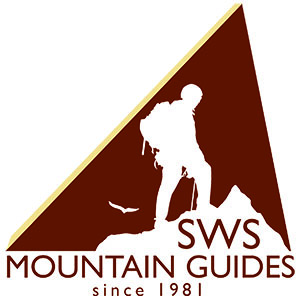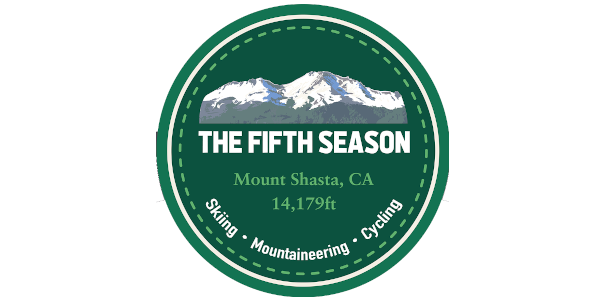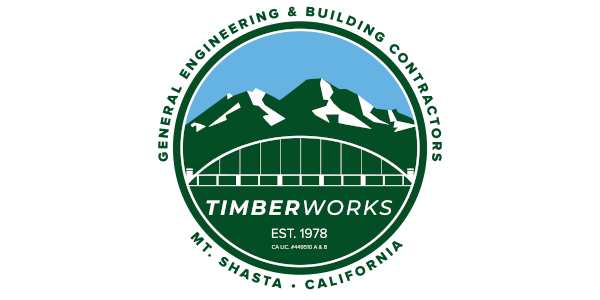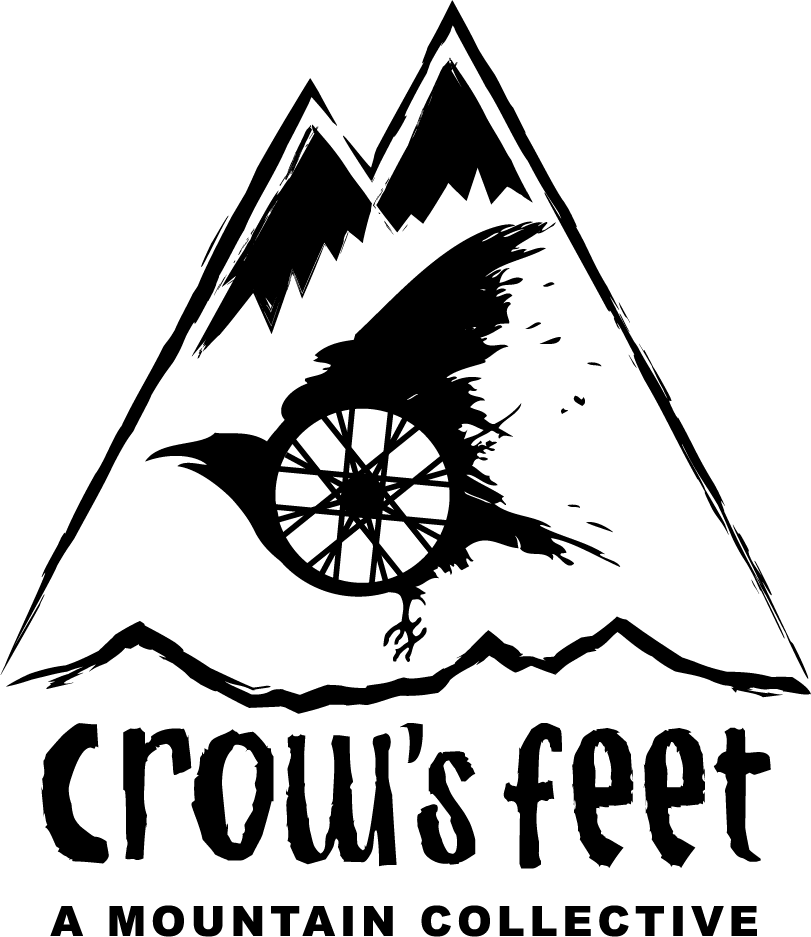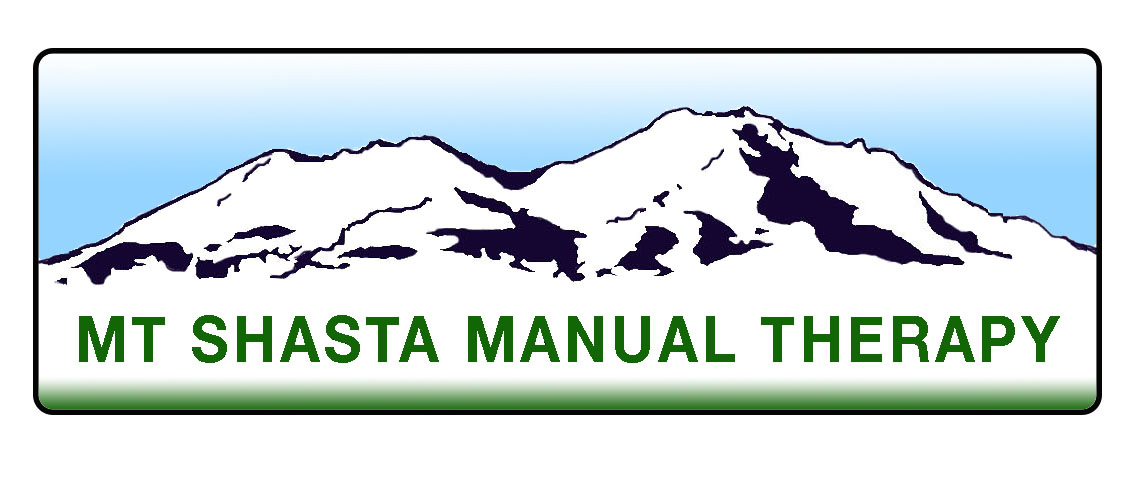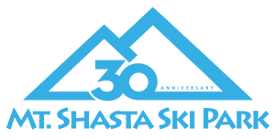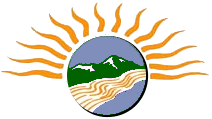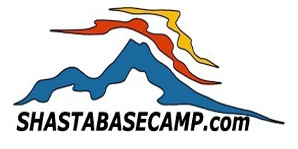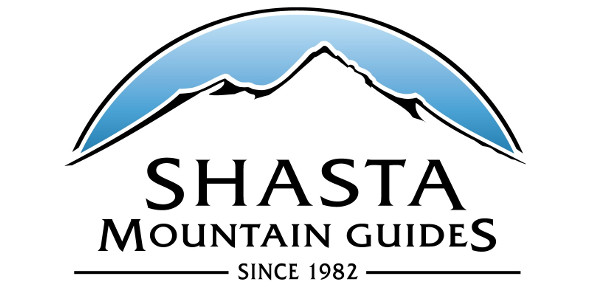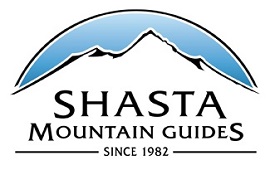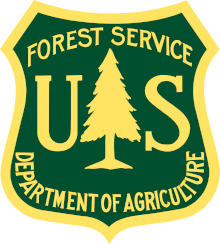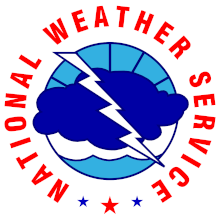You are here
Avalanche Advisory for 2016-04-17 06:49:28
- EXPIRED ON April 18, 2016 @ 6:49 amPublished on April 17, 2016 @ 6:49 am
- Issued by Nick Meyers - Shasta-Trinity National Forest
Bottom Line
The Mt Shasta Avalanche Center has closed it's doors for the winter season. We will continue to update climbing and route conditions throughout the 2016 season on our climbing route and overall climbing conditions pages. Springtime on Mt Shasta means you could encounter snow, rain, sun, clouds, hot, cold, extreme wind...all in a day. This variety of conditions can affect the avalanche danger greatly. Below are the most common avalanche problems in the spring.
Avalanche Problem 1: Loose Wet
-
Character ?

This is probably the most common type of avalanche during the spring. Wet loose avalanches are a release of wet unconsolidated snow or slush. These avalanches typically occur within layers of wet snow near the surface of the snowpack, but they may quickly gouge into lower snowpack layers. They start at a point and entrain snow as they move downhill, forming a fan-shaped avalanche. They generally move slowly, but can contain enough mass to cause significant damage to trees, cars or buildings. Some of these avalanches may seem harmless, but can be deadly in high consequence terrain like above cliffs or a terrain trap. An important point to remember is that loose wet avalanches can trigger slab avalanches that break into deeper snow layers.
Travel when the snow surface is colder and stronger. Typically, this involves starting early and heading back early. Plan your trips to avoid crossing on or under very steep slopes in the afternoon. Move to colder, shadier slopes once the snow surface turns slushy. Avoid steep, sunlit slopes above terrain traps, cliffs areas and long sustained steep pitches.
Avalanche Problem 2: Storm Slab
-
Character ?

Large storms accompanied by strong winds can occur every spring. It is not uncommon to have spring storms drop 2-3+ feet of new snow at upper elevations. So, just like in the winter it is best to give the snowpack ample time to adjust to the new load. Often in the spring this new snow will fall on melt-freeze crusts (sun or rain crusts). This crust provides a great bed surface for the new snow to slide on. Storm slabs are a release of a soft cohesive layer (a slab) of new snow that breaks within the storm snow or on the old snow surface. Storm slab problems typically last between a few hours and few days. It is also important to pay attention to wind slabs that form both during a storm and during high wind events.
You can reduce your risk from storm slabs by waiting a day or two after a storm before venturing into steep terrain. Storm slabs are most dangerous on slopes with terrain traps, such as timber, gullies, over cliffs, or terrain features that make it difficult for a rider to escape off the side.
Avalanche Problem 3: Wind Slab
-
Character ?

It is also important to pay attention to wind slabs that form both during a storm and during high wind events. Large storms accompanied by strong winds can occur every spring. Wind slabs can develop even on days that it is not snowing, such as the day after a storm when the skies turn blue. So, just like in the winter it is best to give the snowpack ample time to adjust to the new wind load. Often in the spring wind slabs will form on melt-freeze crusts (sun or rain crusts). This crust provides a great bed surface for the new snow to slide on. WInd slabs are a release of a cohesive layer (a slab) of wind deposited snow. Snow deposited onto leeward terrain is often smooth and rounded and sometimes sounds hollow. Wind slab problems typically last between a few hours and few days.
You can reduce your risk from wind slabs by waiting a day or two after a storm before venturing into steep terrain. Wind slabs are most dangerous on slopes with terrain traps, such as timber, gullies, over cliffs, or terrain features that make it difficult for a rider to escape off the side.
Forecast Discussion
THIS SEASON PRECIPITATION for MT SHASTA CITY: Since October 1st (the wet season) through April 17th, we have received 37.61 inches of water, normal is 37.16 inches, putting us at 101% of normal. For the month of April we've received 0.88 inches of water, normal is 1.70 inches, putting us at 51% of normal, and finally... for the year of 2016 we've received 28.12 inches of water, normal is 21.95 inches, putting us at 101% of normal.
Recent Observations
SPRING STATEMENT 2016:
During spring weather, the avalanche danger is generally lowest during the night and early morning hours when the surface snow refreezes due to heat loss to the surrounding atmosphere. During the day, sun effects and warm air temperatures can rapidly melt and weaken surface snow layers and produce increasing avalanche danger during the late morning and afternoon. Loose wet avalanche activity generally starts on east and southeast facing slopes during the afternoon. Therefore the safest time to cross potential avalanche terrain is during early morning hours before the surface snow begins to warm and weaken.
This daily melt-freeze cycle is strongly affected by any cloud cover during the night since clouds at night limit cooling and may prevent re-freezing. Lack of a thorough surface re-freeze may allow melt water to affect and weaken progressively deeper layers in the snow cover. Snowpack weakening is maximized when warm days are followed by warm overnight temperatures and overcast skies. Backcountry travelers should exercise particular caution under these conditions as it may increase the wet snow avalanche potential.
Backcountry travelers and climbers should also be aware that spring storms might quickly produce avalanche conditions. Although precipitation may fall as rain at lower elevations, substantial new snow may be deposited at higher elevations. This new snow may form a poor bond with an old crusted snow surface. Rapid rises in temperature following the storm due to intense solar effects may quickly warm and weaken any recent snow, which may need little or no disturbance to slide. While subsequent loose wet slides may start small, they can entrain more snow as they descend and could trigger larger wet slab slides as well.
Be aware of hazards overhead regarding cornices and rime ice formations that were formed in late winter and spring. Cornices become more unstable and likely to fail during warm weather. Also, cornice fall may trigger loose wet or wet slab avalanches on slopes below.
Rain may also increase the likelihood of avalanches. Rain falling on an already wet snowpack causes water to quickly percolate through the snowpack and weaken progressively deeper snow layers. If the water encounters a crust or ice lens it may flow along this layer and lubricate it, making avalanches increasingly likely within the snow above.
No matter what the season, backcountry travelers and climbers should avoid slopes of questionable snowpack stability. Remember that small avalanches may be dangerous.
Finally, we extend a giant thank you to all who have helped support the Mt Shasta Avalanche Center. Your observations, donations, feedback and general support are very much appreciated. The climbing rangers will continue to update the website for climbing conditions throughout the spring. Thanks for the great season and we will see you back here next winter!
-----------------------------------------------------------------------------------------------------------------------------------------------------------
The Five Red Flags of Avalanche Danger any time of year include: 1) Recent/current avalanche activity 2) Whumphing sounds or shooting cracks 3) Recent/current heavy snowfall 4) Strong winds transporting snow 5) Rapid warming or rain on snow.
-----------------------------------------------------------------------------------------------------------------------------------------------------------
LOCAL AREA ROAD, NORDIC, AND SNOWMOBILE PARK STATUS:
The Sand Flat cross country ski trails are still covered in snow. A little bit of fresh snow has them in better shape currently, though they have been a little crusty before this last storm. Tree wells are beginning to show. These are backcountry routes marked with blue diamonds on trees. Trails are not groomed. Snow shoers, please blaze a parallel trail to cross country skiers staying out of the skin track. These trails can be accessed via the Everett Memorial Highway. Thank you, and enjoy!
The Mt. Shasta Nordic Center is CLOSED for the season. http://www.mtshastanordic.org
The Pilgrim Creek & Deer Mountain Snowmobile Parks are open, however there is currently no snow at these locations. One had to drive down the 19 road (Military Pass) to get to consistent snow before unloading. Head to our "Education" tab on our website and find the snowmobile section for trail information, grooming status, and other sledder resources.
The Castle Lake Road is OPEN. The Everett Memorial Highway is OPEN to Bunny Flat. The gate at Bunny Flat is open from July 1st to November 1st, regardless of snow conditions. The Castle Lake and Everett Hwy are plowed year round to the trailheads. The roads are not always first priority, so your dawn patrol powder mission might be ceased if the plow has not made it up yet. Siskiyou County does a great job keeping the roads clear. Be respectful of the plow drivers if you encounter them. If you get to Bunny Flat before or during when the plow is there, please park on the uphill, LEFT side of the parking lot as you drive in. This is uphill and lookers right of the bathrooms. Thank You!
Weather and Current Conditions
Weather Summary
Please check our 'Weather' tab at the top of the page for our weather station information, NWS discussions and spot/recreational forecasts.
ALWAYS check the weather before you attempt to climb or recreate on Mt. Shasta. Continue to monitor the weather as you climb. Becoming caught on the mountain during any type of weather can comporomise life and limb. Please be prepared!
| 0600 temperature: | -- |
| Max. temperature in the last 24 hours: | -- |
| Average wind direction during the last 24 hours: | -- |
| Average wind speed during the last 24 hours: | -- mi/hr |
| Maximum wind gust in the last 24 hours: | -- mi/hr |
| New snowfall in the last 24 hours: | -- inches |
| Total snow depth: | -- inches |
Two Day Mountain Weather Forecast
Produced in partnership with the Medford NWS
| For 7000 ft to 9000 ft | |||
|---|---|---|---|
|
Sunday (4 a.m. to 10 p.m.) |
Sunday Night (10 p.m. to 4 a.m.) |
Monday (4 a.m. to 10 p.m.) |
|
| Weather | -- | -- | -- |
| Temperature (°F) | -- | -- | -- |
| Wind (mi/hr) | -- -- | -- -- | -- -- |
| Precipitation SWE / Snowfall (in) | / -- | / -- | / -- |
| For 9000 ft to 11000 ft | |||
| Sunday | Sunday Night | Monday | |
| Weather | -- | -- | -- |
| Temperature (°F) | -- | -- | -- |
| Wind (mi/hr) | -- - | -- -- | -- -- |
| Precipitation SWE / Snowfall (in) | / -- | / -- | / -- |














